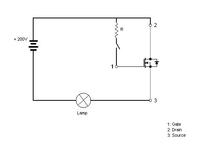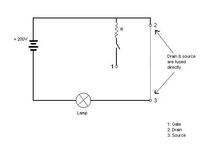Genovator
Advanced Member level 2

Hi edaboard...
I am having a confusion on a transistor K3567 about the voltage flow....
Pin 1 is GATE which makes the circuit on & off....
But I want to know whether the voltage flows from 'SOURCE to DRAIN' or 'DRAIN to SOURCE'????
Please simplify it.....
I am having a confusion on a transistor K3567 about the voltage flow....
Pin 1 is GATE which makes the circuit on & off....
But I want to know whether the voltage flows from 'SOURCE to DRAIN' or 'DRAIN to SOURCE'????
Please simplify it.....



